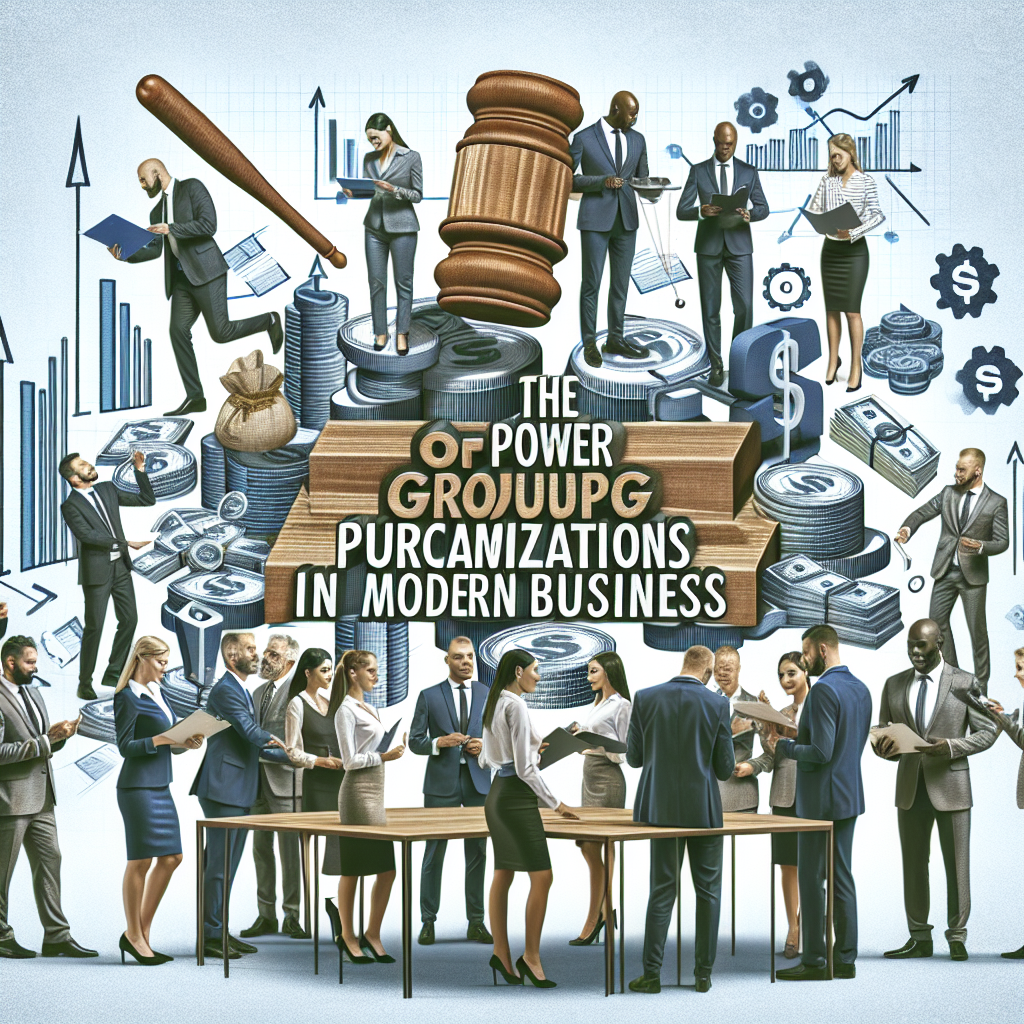Introduction
Saving money on office supplies is important for improving an organization’s financial health. By managing costs effectively in procurement, organizations can reduce expenses and make the most of their resources. Here are two key areas to focus on:
- Finding ways to cut costs
- Using procurement strategies that promote efficiency
One way to achieve this is by managing tail spend, which involves controlling and optimizing the smaller, less significant portion of your spending. This can lead to substantial savings without compromising on quality.
Strategic sourcing in office supplies ensures that you select the right vendors, negotiate favorable terms, and maintain quality standards while keeping costs in check. For instance, knowing how to manage a one-person procurement function can be instrumental for smaller organizations or startups.
Moreover, effective procurement strategies can also involve maximizing federal grant funding for nonprofits, which can provide additional resources for procurement.
By focusing on these elements, organizations can achieve significant savings and improve their bottom line. However, it’s not just about saving costs; it’s also about ensuring that the supplies procured contribute positively to the workplace environment. For example, providing adequate break-room supplies can significantly boost employee morale.
In certain sectors, especially healthcare, procuring essential PPE for airborne precautions becomes a crucial aspect of office supply procurement.
Understanding the Procurement Process for Office Supplies
The procurement process for office supplies involves a systematic approach to acquiring essential materials required for daily operations. Here are the key components of this process:
1. Needs Assessment
This step involves identifying the specific office supplies necessary for your organization.
2. Supplier Selection
In this stage, potential vendors are evaluated based on quality, reliability, and pricing.
3. Order Management
Efficient workflows for placing orders and tracking deliveries are established during this phase.
4. Payment Processing
Timely payments to vendors while maintaining budgetary controls is the focus of this step.
Effective vendor management plays a crucial role in ensuring smooth procurement operations. Building strong relationships with suppliers can lead to:
- Better Pricing: Negotiating favorable terms that result in cost savings.
- Reliable Service Levels: Ensuring consistent supply availability and timely deliveries.
- Problem Resolution: Facilitating prompt responses to any issues that arise during the procurement cycle.
By prioritizing these elements within the procurement process, organizations can enhance their operational efficiency. A strategic approach to vendor management not only streamlines purchasing activities but also contributes significantly to achieving long-term savings in office supply expenditures.
To further optimize your procurement strategy, consider exploring procurement optimization techniques that can enhance efficiency and reduce costs. Additionally, understanding the difference between strategic sourcing and category management can provide valuable insights into refining your supplier selection process.
Moreover, as organizations strive to build inclusive workplaces, it’s crucial to incorporate Diversity, Equity and Inclusion (DEI) principles into vendor management practices. This not only fosters better supplier relationships but also promotes a more equitable procurement process.
Lastly, staying updated with the latest trends in supplier innovation is essential. Exploring top trends in supplier innovation can provide you with insights on how to leverage new technologies and practices for better procurement outcomes.
Strategies for Achieving Cost Reduction in Office Supply Procurement
Achieving cost reduction in office supply procurement requires a strategic approach. Here are effective strategies to consider:
1. Utilizing National Contracts
National contracts can provide substantial savings. By leveraging existing agreements with suppliers, you can negotiate better pricing structures. This is especially beneficial for organizations that frequently purchase similar items across multiple locations. Assessing these contracts ensures competitive rates and consistent quality. Furthermore, leveraging collective spend can lead to even more significant cost reductions.
2. Exploring Bulk Purchasing Benefits
Bulk purchasing can significantly reduce costs. Buying in larger quantities often leads to discounts and lower per-unit prices. Implementing bulk purchasing effectively involves:
- Analyzing usage patterns to determine which items are used most frequently.
- Coordinating with other departments to consolidate orders.
- Establishing relationships with suppliers who offer volume discounts.
3. Highlighting the Importance of Regular Inventory Tracking
Regular inventory tracking is vital for managing expenses effectively. Maintaining accurate records helps prevent overstocking, which ties up capital, and stockouts, which disrupt operations. Key practices include:
- Utilizing inventory management software to automate tracking processes.
- Conducting periodic audits to assess stock levels and identify slow-moving items.
- Adjusting purchasing strategies based on real-time data insights.
These strategies create a more efficient procurement process while maximizing savings. By focusing on national contracts, bulk purchasing, and diligent inventory management, your organization can enhance its procurement efficiency and drive down costs effectively. Additionally, it’s essential to implement effective sourcing strategies that not only help in procuring supplies but also in hiring top talent for your organization.
Leveraging Technology and Software Solutions for Efficient Office Supply Procurement
Procurement software plays a crucial role in enhancing the efficiency of office supply procurement activities. By automating repetitive tasks, it streamlines purchasing processes and reduces the risk of human error. This leads to significant procurement savings over time. Key advantages include:
- Centralized Resource Management: Procurement software consolidates all supply purchases into one system, allowing you to track orders, manage suppliers, and analyze spending patterns seamlessly.
- Improved Inventory Control: Advanced software tools provide real-time inventory tracking, enabling better decision-making regarding restocking and minimizing excess inventory.
- Enhanced Reporting Capabilities: With built-in analytics, procurement software can generate reports on spending trends and supplier performance, helping you identify areas for cost reduction.
When selecting procurement software, consider these essential features to ensure it aligns with your organization’s needs:
- User-Friendly Interface: An intuitive design encourages team adoption and reduces training time.
- Integration Capabilities: The software should integrate easily with existing systems such as ERP or accounting software for streamlined operations.
- Customization Options: Look for solutions that allow you to tailor functionalities based on unique business requirements.
- Supplier Management Tools: Effective vendor management capabilities support relationship building and facilitate negotiations for better pricing.
Moreover, exploring compliance-driven sourcing can further enhance procurement strategies by aligning with ethical standards and reducing risks.
Investing in the right procurement technology not only simplifies processes but also contributes significantly to achieving office supply procurement savings through improved efficiency and resource management. For those considering a career shift into this field, there are numerous entry-level procurement jobs available that can serve as a stepping stone into the industry.
Exploring Membership Programs and Savings Initiatives for Office Supply Procurement
Membership programs play a crucial role in enhancing your organization’s procurement strategy. These programs often provide significant discounts on office supplies and services, making them an attractive option for businesses aiming to reduce costs.
Key Membership Programs
1. Group Purchasing Organizations (GPOs)
GPOs leverage collective buying power from multiple organizations to negotiate better pricing with suppliers. Joining a GPO can lead to cost reductions on essential office supplies, as they typically offer exclusive rates that individual organizations may not access.
However, there are some myths surrounding GPOs that need to be addressed for organizations to fully benefit from them.
It’s also worth noting the specific benefits of group purchasing in the private sector, which can further optimize procurement strategies.
Furthermore, understanding the difference between purchasing groups and GPOs can help organizations make more informed decisions.
2. Corporate Memberships
Many suppliers offer corporate memberships that include volume discounts, special promotions, and tailored services.
These memberships can streamline your purchasing process while ensuring you receive competitive pricing.
Utilizing Spending Analysis Techniques
Implementing spending analysis is vital for identifying core items that deliver strategic value to your organization. This process involves:
- Data Collection: Gather historical spending data to understand current procurement patterns.
- Category Management: Analyze spending categories to highlight areas where savings can be achieved.
- Core Item Identification: Focus on high-volume items that are essential for daily operations; these are often the best candidates for negotiation or bulk purchasing.
By combining membership programs with effective spending analysis, you can make informed decisions that lead to long-term savings in your office supply procurement efforts.
Enhancing Supplier Relationships and Ensuring Transparency in Office Supply Procurement Processes
Building strong relationships with key suppliers is essential for achieving cost savings and improving service levels. When you foster collaboration with suppliers, you can negotiate better pricing structures and terms. This concept falls under the realm of [supplier relationship management](https://hubzonedepot.com/tag/supplier-relationship-management), which includes several strategies:
1. Open Communication
Regular dialogue helps to align expectations and address issues proactively. Share your procurement goals and challenges to create a partnership based on trust.
2. Performance Evaluations
Conduct routine assessments of supplier performance. This not only identifies strengths and weaknesses but also encourages suppliers to improve their services.
3. Long-term Contracts
Committing to long-term agreements can lead to discounts and priority service. Suppliers appreciate the stability of guaranteed business, which can translate into more favorable terms for your organization.
However, in times of crisis, such as economic downturns or supply chain disruptions, it’s crucial to [build resilience](https://hubzonedepot.com/uncategorized/procurement-in-crisis-building-resilience-for-tough-times) within your procurement processes. This might involve reassessing supplier contracts or diversifying your supplier base to mitigate risks.
Implementing transparency measures within your organization further enhances the procurement process. Improved communication among departments leads to better alignment of procurement goals with organizational objectives. Here are some effective practices:
- Shared Platforms: Utilize procurement software that allows real-time access to purchasing data. This transparency helps all departments understand spending patterns and inventory levels.
- Regular Reporting: Establish a routine for sharing procurement metrics across departments. By doing so, stakeholders remain informed about spending trends and can contribute insights or suggestions for improvement.
- Cross-functional Teams: Encourage collaboration between procurement, finance, and operations teams. This collective approach fosters understanding of how each department’s activities impact overall procurement efficiency.
It’s important to note that certain [procurement terms](https://hubzonedepot.com/uncategorized/procurement-terms-to-avoid-to-better-communicate-procurements-value) should be avoided in order to better communicate the value of procurement within the organization.
By focusing on supplier relationships and implementing transparency measures, organizations can create an environment conducive to cost savings and improved operational efficiency in office supply procurement processes. Additionally, when faced with limited resources, [certain essential tips](https://hubzonedepot.com/uncategorized/how-to-succeed-with-limited-resources-10-essential-tips) can help navigate these challenges effectively.
The Role of Continuous Improvement and Performance Tracking in Office Supply Procurement Savings
Regular audits play a critical role in enhancing the effectiveness of office supply procurement. By conducting systematic evaluations, organizations can pinpoint inefficiencies and identify areas ripe for improvement. This proactive approach facilitates informed decision-making, ultimately leading to significant cost savings.
Benefits of Regular Audits
- Assessment of Procurement Effectiveness: Regular audits provide a comprehensive view of procurement processes, ensuring that all practices align with organizational goals.
- Identification of Cost-Saving Opportunities: Through detailed analysis, audits help uncover hidden costs or wasteful spending, enabling targeted strategies for reduction such as maximizing supplier performance.
Establishing Key Performance Indicators (KPIs) serves as another essential component in tracking procurement success. KPIs offer measurable metrics that allow you to gauge the effectiveness of your procurement strategies over time.
Key KPIs to Consider
- Savings Rate: Measure the percentage of savings achieved against total spend.
- Supplier Performance: Track delivery times and service quality to ensure suppliers meet expectations.
- Inventory Turnover Rate: Monitor how efficiently inventory is utilized to prevent overstocking or stockouts.
By utilizing audits and KPIs as foundational elements within your procurement strategy, you foster an environment of continuous improvement. This focus not only enhances operational efficiency but also bolsters your organization’s ability to achieve substantial office supply procurement savings. The journey towards mastering procurement is akin to a life of learning and transformation, where continuous learning and strategic thinking drive success. Ultimately, these efforts contribute to maximizing cost savings in your daily operations.
Conclusion
Adopting sustainable savings strategies in office supply procurement is essential for maximizing long-term financial benefits. Implementing effective practices can lead to substantial cost reductions while maintaining quality and efficiency. Consider the following:
- Focus on strategic sourcing to ensure competitive pricing.
- Embrace bulk purchasing and vendor management for better deals.
- Utilize technology to streamline processes and enhance transparency.
These approaches not only improve your bottom line but also contribute to a more sustainable procurement environment. Prioritize these strategies for enduring success in office supply procurement savings.





